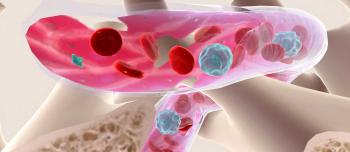At a recent meeting of the American Society of Hematology (ASH), BioMarin Pharmaceutical Inc. provided a series of updates relevant to the company’s investigational hemophilia A gene therapy candidate valoctocogene roxaparvovec (formerly BMN 270). The 59th ASH Annual Meeting and Exposition was held December 9-12, 2017 in Atlanta, Georgia.
Valoctocogene roxaparvovec uses adeno-associated viruses (AAVs) as delivery vehicles, or vectors, to carry the genetic codes that prompt the production of the factor VIII (FVIII) protein that is deficient in people with hemophilia A. These AAVs are designed to deliver genetic material into living cells to sustain therapeutic effect without causing disease or triggering significant immune responses.
BioMarin’s reports at ASH, which came in the form of multiple abstracts and presentations, encompasses up to 1.5 years of clinical data. One presentation highlighted positive data drawn from two different trial groups, one representing patients who received a lower dose of the therapy and one that received a higher dose.
As of the November 16, 2017 data cutoff, the three patients in the lower dose group with the longest follow-up (at week 48) have shown FVIII activity levels that are in or near to the normal range with mean values of 49%. Mean annualized bleed and FVIII use rates were 0.6 and 2.0, respectively.
As of the same data cutoff, seven hemophilia A patients in the higher dose group followed at 78 weeks post infusion, showed mean FVIII levels of 89%. Mean annualized bleed and factor VIII use rates were 0.5 and 6.1, respectively.
BioMarin also highlighted an article recently published in the New England Journal of Medicine (NEJM) on the efficacy and safety of valoctocogene roxaparvovec in the high dose group of a phase 1/2 trial. The NEJM article, “AAV Gene Transfer in Patients with Severe Hemophilia A,” published online December 9, 2017, includes reports of “sustained normalization” of FVIII activity over a one year period for six of seven study participants who received the higher dose of valoctocogene roxaparvovec. In addition, all seven participants demonstrated stabilization of hemostasis and a “profound” reduction in FVIII use.
“The confluence of new medicines and advanced treatment approaches for hemophilia has created an unprecedented opportunity to improve outcomes for patients today and in the future,” said Hank Fuchs, MD, President, Worldwide Research and Development at BioMarin. “We are very encouraged that our findings to date suggest a one-time infusion of valoctocogene roxaparvovec has the potential to eliminate bleeds, the need for exogenous factor VIII infusions and achieve FVIII levels in the normal range for patients with severe hemophilia A, with a very acceptable safety profile. We are entering a new era for the treatment of severe hemophilia and look forward to advancing an innovative therapeutic platform for our patients.”
Source: BioMarin press release dated December 11, 2017





